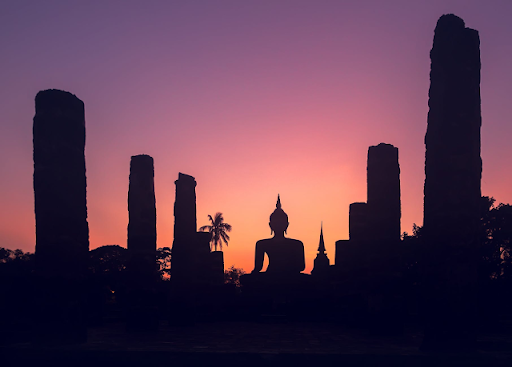Buddhism and War... The World Needs More Buddhism... Not More War
Buddhism and war
Non-violence is at the heart of Buddhist thinking and behaviour. The first of the five precepts that all Buddhists should follow is "Avoid killing, or harming any living thing."
Buddhism is essentially a peaceful tradition. Nothing in Buddhist scripture gives any support to the use of violence as a way to resolve conflict.
In times of war
Give rise in yourself to the mind of compassion,
Helping living beings
Abandon the will to fight.
One of Buddha's sermons puts this very clearly with a powerful example that stresses the need to love your enemy no matter how cruelly he treats you:
Even if thieves carve you limb from limb with a double-handed saw, if you make your mind hostile you are not following my teaching.
Kamcupamasutta, Majjhima-Nikkaya I ~ 28-29
Figures like the Dalai Lama (who won the Nobel Peace Prize) demonstrate in word and deed Buddhism's commitment to peace.
"Hatred will not cease by hatred, but by love alone.
This is the ancient law."
Many Buddhists have refused to take up arms under any circumstances, even knowing that they would be killed as a result. The Buddhist code that governs the life of monks permits them to defend themselves, but it forbids them to kill, even in self-defence.
For Buddhist countries this poses the difficult dilemma of how to protect the rights and lives of their citizens without breaking the principle of nonviolence.
The pure Buddhist attitude is shown in this story:
A Vietnam veteran was overheard rebuking the Vietnamese Buddhist monk, Thich Nhat Hanh, about his unswerving dedication to non-violence.
"You're a fool," said the veteran - "what if someone had wiped out all the Buddhists in the world and you were the last one left. Would you not try to kill the person who was trying to kill you, and in doing so save Buddhism?!"
Thich Nhat Hanh answered patiently "It would be better to let him kill me. If there is any truth to Buddhism and the Dharma it will not disappear from the face of the earth, but will reappear when seekers of truth are ready to rediscover it.
"In killing I would be betraying and abandoning the very teachings I would be seeking to preserve. So it would be better to let him kill me and remain true to the spirit of the Dharma."
In order to see this content you need to have both Javascript enabled and Flash installed. Visit BBC Webwise for full instructions
Buddhism and martial arts
Buddhist monks have been leaders in developing various forms of martial arts. The Shaolin Order is perhaps the best known of these, famed for their fighting prowess.
Martial arts would seem to be about as far from non-violence as you can get, but Buddhist forms of martial arts have very strict rules about how violence can be used.
The Shaolin teaching forbids the monk from ever being the aggressor, and instructs him to use only the minimum necessary defensive force. By becoming skilled in physical conflict the monk has a better understanding of violence and is able to use sophisticated techniques to avoid harm, ranging from simple parrying of clumsy blows to paralysing grips and knockout blows in the face of extreme violence - but always using only the amount of force needed to refuse the violence that is being offered to them.
Most martial arts traditions have strong spiritual and philosophical elements, and insist on a responsible and minimalist attitude to violence.
But.. Even Buddhism has failed to always live by the values it preaches. Self Interest and the ego has a powerful negative influence it seems.
We CAN and MUST do better.
Buddhism and violence
But Buddhism, like the other great faiths, has not always lived up to its principles - there are numerous examples of Buddhists engaging in violence and even war.
- in the 14th century Buddhist fighters led the uprising that evicted the Mongols from China
- in Japan, Buddhist monks trained Samurai warriors in meditation that made them better fighters
In the twentieth century Japanese Zen masters wrote in support of Japan's wars of aggression. For example, Sawaki Kodo (1880–1965) wrote this in 1942:
It is just to punish those who disturb the public order. Whether one kills or does not kill, the precept forbidding killing [is preserved]. It is the precept forbidding killing that wields the sword. It is the precept that throws the bomb.
Sawaki Kodo
In Sri Lanka the 20th century civil war between the mostly Buddhist Sinhalese majority and the Hindu Tamil minority has cost 50,000 lives.





Comments
Post a Comment
RN USA no longer accepts comments. The information presented is for reflection, contemplation, and for those seeking greater understanding and wisdom. It is for seekers and those with an open mind and heart.
Namaste